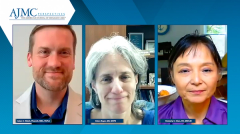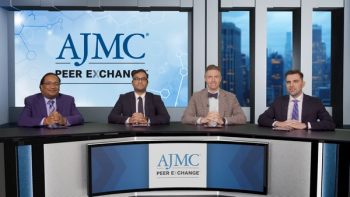
Overview of RSV in Infants and Children
Adam Welch, PharmD, MBA, FAPhA, leads a discussion surrounding payer considerations for RSV vaccinations in children.
Episodes in this series

Adam C. Welch, PharmD, MBA, FAPhA: Hello, and welcome to this American Journal of Managed Careâ Payer Perspectives on RSV [respiratory syncytial virus] in infants and children. My name is Adam Welch. I’m an independent vaccine consultant and pharmacist with ETSU Health in Johnson City, Tennessee. Joining me today in this virtual discussion are Deborah Boyer, [MD, MHPE,] pediatric pulmonologist at Nationwide Children’s Hospital, and Kimberly C. Chin, [DO, MSHLM,] a senior health plan executive with expertise in Medicare, dual Medicaid, and commercial markets. Today we’re going to talk about several topics pertaining to RSV, including the impact of RSV infections in infants and children, managing those RSV infections, addressing the financial hurdles associated with RSV and immunizations, and the future direction of the treatment of RSV. So let’s get started. Let’s start off with Dr Boyer. First, what is RSV? How is it transmitted? What are some of the outcomes associated with RSV?
Debra Boyer, MD, MHPE: RSV is really something well known to all pediatric residents and pediatricians in general. [It] is really the most common respiratory virus that children will encounter. I think if we all get it, I guess really for many of us as adults, it’ll look like a common cold and just a bad, bad upper respiratory tract infection. I think infants can certainly get [those] upper respiratory symptoms with rhinitis and cough. About 20% or 30% of children over [time] develop more severe lower respiratory tract disease, things that we know of, like bronchiolitis and pneumonia, which can obviously cause more severe symptoms where they’ll have an increased respiratory rate, wheezing, etc. In very young infants, they can present a little differently with lethargy, irritability, and even poor feeding. And there’s certainly a higher incidence of apnea in the youngest babies. So something to look out for, in terms of transmission—it’s transmitted pretty easily. And that’s why I think it jumps around all of us so quickly with direct or close contact with respiratory secretions. So it’s a pretty common virus. And in some [people], it’s mild. And as we’ll talk later, in some kids, it can cause some pretty severe disease.
Adam C. Welch, PharmD, MBA, FAPhA: As a follow-up, Dr Boyer, when you say pretty common, the prevalence of RSV, particularly in infants—it’s almost everyone, right?
Debra Boyer, MD, MHPE: It is extremely common. I’d say most children by the age of 2 [years] will have encountered RSV. Reinfections are really common. So again, it’s something that just because you get it once doesn’t mean you won’t get it again. When you look at the numbers, probably about 4 [million] to 5 million children. When you look at the data under the age of 4, [children] will get RSV each year. So it is really, really pretty common.
Adam C. Welch, PharmD, MBA, FAPhA: That sounds really prevalent. So, you mentioned also, when you were describing the characteristics of RSV, lower respiratory symptoms. So, RSV typically presents with these upper respiratory symptoms in a lot of [people]. But then it becomes more severe in the lower respiratory infections. That’s when we’re thinking of hospitalization. So can you talk a little bit more about what makes RSV severe?
Debra Boyer, MD, MHPE: In terms of those more severe symptoms, the kids who end up being hospitalized would be the ones who are hypoxic. They have a need for supplemental oxygen. Their saturations drop below 90%, 92%. [The] vast number of kids, you know, will tolerate up to 60% before we start to get nervous. But I think it’s the dehydration and it’s really the hypoxia that would lead to the hospitalizations, [if you look at the] literature. But if you look around, probably over 120,000, 125,000 children a year are hospitalized in the United States for RSV. I think in some of the recent data I read worldwide, there are probably more than 50,000 in-hospital deaths per year worldwide. So while in a majority of children, it’s a mild disease, in a subset of children, it’s quite severe and even can be fatal.
Adam C. Welch, PharmD, MBA, FAPhA: I just wanted to expand on this subset here. So are there certain children who you would say are [at] higher risk for developing or being part of that 120,000 who are hospitalized every year?
Debra Boyer, MD, MHPE: There certainly are children who are more at risk. There are full-term, healthy children who can have severe disease. And we’ve certainly seen that in the past couple of years, but certainly premature infants, children with underlying lung disease, hemodynamic unstable cardiac disease, neuromuscular disease, immunodeficiencies—those are children who tend to have more trouble with RSV than the full-term, healthy child.
Adam C. Welch, PharmD, MBA, FAPhA: So, it sounds like this can be really burdensome for certain infant and children populations.
Transcript edited for clarity.
Newsletter
Stay ahead of policy, cost, and value—subscribe to AJMC for expert insights at the intersection of clinical care and health economics.







































